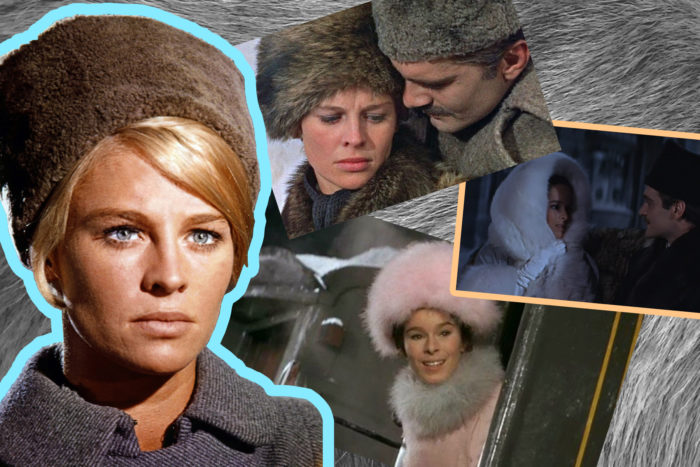
Bodies, dress and city space intersected in new ways in the 3rd May 1963 issue of Elle in an editorial that presented ready-made garments in toile, a linen textile. One photograph by Fouli Elia depicted a cross-legged model standing against the grid of the metal beams of a nondescript Modernist building that composed and dominated the photograph’s backdrop. She stared fixedly at something located off the page, and her look suggested that it was an open expanse of scenery, or an extension of her imposing architectural surroundings. Behind her, the building took on the greenish sheen of her shirt and skirt ensemble by the ready-made brand Stanley. Structure embodied the dressed model, both cast in the same hue, constructed from the same fabric. Likewise, the article’s text described clothing in spatial terms, and figure one was identified as “a large green space for this two-piece ensemble, comfortable and sweater style. In what? In toile fibranne.” This material, a rayon fabric similar to linen, was pictured alongside natural fibres in this spread. Yet the characteristics of this synthetic cloth, soft yet grainy, unstructured yet weighty, reflected paradoxes held within the fabric of the photograph. In contrast to the text, the image suggested a lack of space, through the subject’s close crop and the seemingly nonexistent distance between figure and building.
The editorial, with its images of models with outlined bodies superimposed onto buildings, appeared during a period of rapid urbanisation in France. From the 1950s and increasingly into the 1960s and 1970s, low-income housing estates, or Habitations à Loyer Moderé (HLM) were erected in cities’ suburbs to accommodate factory workers, immigrants, and Paris’ growing population. By 1964, there were at least 1,000 of these buildings in the three departments of the Parisian region. In direct contrast to deteriorating and crowded housing in Paris, the government promoted these cités, usually comprised of towers and high-rise blocks (grands ensembles) with park space, schools and other facilities, as symbols of France’s economic modernism and ‘progress.’ This language resembled that used to describe the developing French ready-to-wear, pictured increasingly in the fashion press during the 1950s and early 1960s. Articles in Elle also regularly discussed the housing transition; in 1961 for example, editor Anne-Marie Raimond surveyed women who lived in suburbs and sought to depict the vastness of these spaces and the new way of life they offered:
It is the most formidable exodus of modern time, causing the upheaval of landscapes as well as man’s customs and spirit. […] A new style is born, that of ‘garden cities,’ ‘ensembles,’ ‘residences,’ where sun and greenery come with the deed or lease. Inhabitants (almost) remain Parisian, Lyonnais, Lillois, but have changed rhythm and character. They blossom like plants uprooted from undersized pots, put into the wide earth.
As in the 1950s, descriptions such as this instilled the modernity and progress of the vast, new spaces in their female inhabitants. Elle’s 1963 article likewise conflated clothing, bodies and wide spaces, portraying garments as “very sunny dream ensemble[s],” and “To live in right away.” Yet, the incongruity between idealising text and subtly dark imagery hinted at growing criticism of these estates, and a heightened awareness of their realities.
These outer spaces likewise became normalised in magazine imagery. Pages in Elia’s editorial that displayed a fashion photograph beneath a landscape illustrated how magazines’ new definition of fashion city and urban space stretched to Paris’ suburbs and airport. One such image was cited as “Modern Paris. View from the southern highway between Paris and Orly.” Similarly, in light of Paris’ expansion, Henri Lefebvre wrote in 1970: “The urban fabric proliferates, extends itself, corrodes the residues of agrarian life.” In contrast to photographs of old, iconic, and static Paris (which traditionally upheld the symbolic construction of haute couture), these images visualised modern Paris in perpetual construction and expansion. Below this image, which stressed the vastness of suburban space and sky, a photograph pictured a model in front of a building. Like her above counterpart, the model seemed superimposed, and the frame could not contain her body. The caption identified her location as boulevard Lannes in Paris’ 16th arrondissement, the appropriate well-to-do setting for her expensive suit, in raw silk with and jersey blouse designed by Chloé, which was sold for 700 francs at the fashionable boutique Henry à la Pensée. Financial access to ready-to-wear was a constant promotional factor, which did not always correspond to reality. In this instance, readers were offered, yet barred from purchase of toile, and the ambiguous all-encompassing urban fabric of Paris.
Sources
“Faites vos plans sur la toile,” Elle, no. 906, 3 May 1963, 96, 99, 100, 102. Author’s translations.
Anne-Marie Raimond, “Une enquête une revelation une revolution: le visage et la vie des nouvelles banlieusardes,” Elle, no. 826, 20 October 1961, 84. Author’s translations.
Paul Clerc, Grands ensembles banlieues nouvelles: enquête démographique et psycho-sociologique. Paris: PUF, 1967.
Henri Lefebvre, The Urban Revolution, trans. Robert Bononno, Minneapolis and London: University of Minnesota, 2003 [1970], 3.














